Neumann et al. demonstrate that aging renders adult oligodendrocyte progenitor cells unresponsive to pro-differentiation factors, which can be reversed both in vitro and in vivo by calorie restriction (CR) and the CR mimetic metformin.
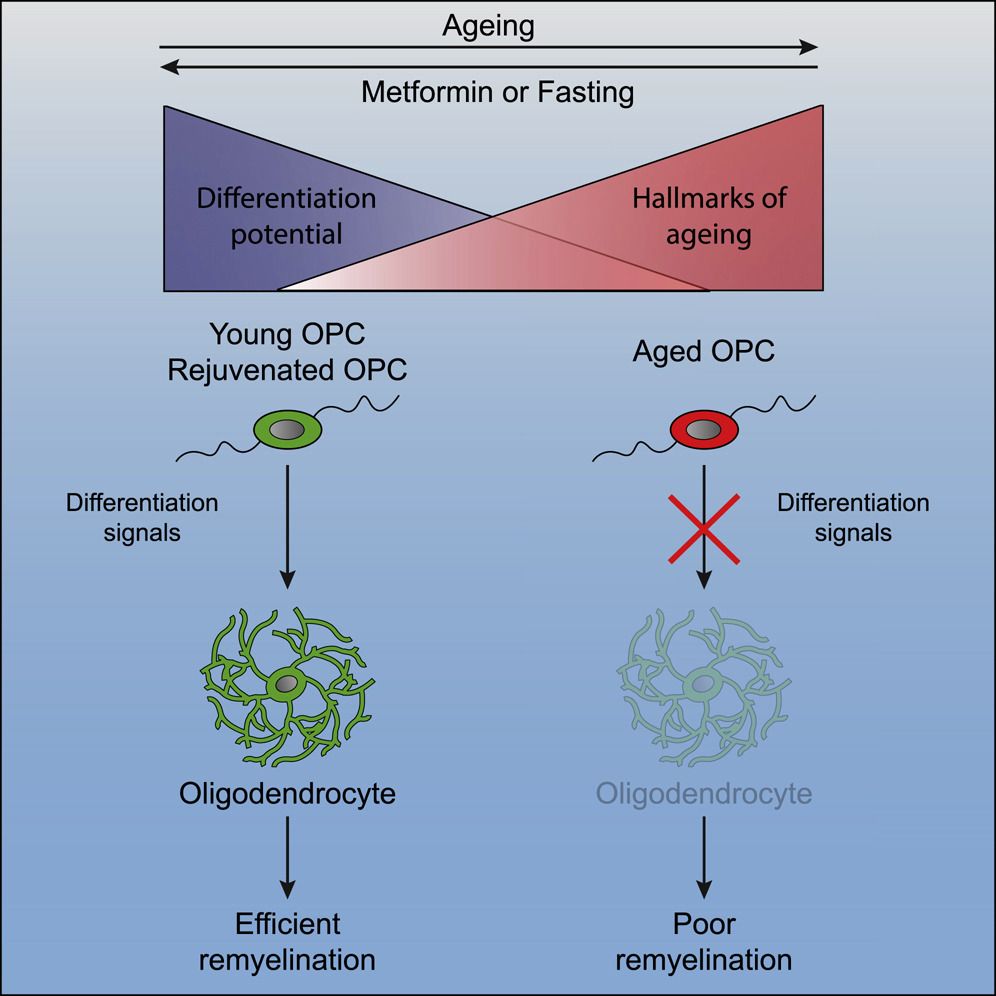

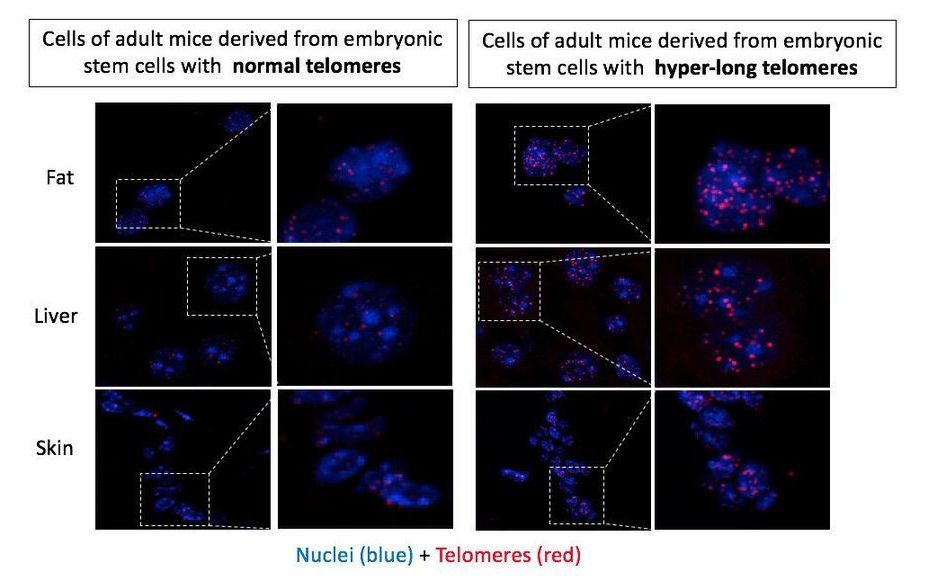
A chance finding 10 years ago led to the creation by researchers of the Spanish National Cancer Research Centre (CNIO) of the first mice born with much longer telomeres than normal in their species. Telomeres shorten throughout life, so older organisms have shorter telomeres. Given this relationship between telomeres and aging, the scientists launched a study generating mice in which 100 percent of their cells had hyper-long telomeres. The findings are published in Nature Communications and show only positive consequences: The animals with hyper-long telomeres live longer and in better health, free from cancer and obesity. This marks the first time that longevity has been significantly increased without any genetic modification.
“This finding supports the idea that, when it comes to determining longevity, genes are not the only thing to consider,” says Maria Blasco, head of the CNIO Telomeres and Telomerase Group and intellectual author of the paper. “There is margin for extending life without altering the genes.”
Telomeres form the ends of chromosomes in the nucleus of each cell in the body. Their function is to protect the integrity of the genetic information in DNA. Whenever the cells divide the telomeres, they are slightly shortened, so one of the main characteristics of aging is the accumulation of shorter telomeres in cells. “Telomere shortening is considered to be one of the primary causes of aging, given that short telomeres cause aging of the organism and reduce longevity,” the authors write in a paper published in Nature Communications.

Dessie is a hundred years old.
By most standards this is a ripe old age, one most of us would be grateful to be given. Assuming our health remained decent, most of us would be content to live for seventy or eighty years.
Help Them See the Future, a joint venture between Integrated Health Systems and Maximum Life Foundation, created a campaign to give Dessie gene therapies designed to halt or potentially reverse some of the hallmarks of aging. We are sad to announce that, after suffering a stroke shortly after the campaign was launched, Dessie is no longer a suitable candidate for treatment.
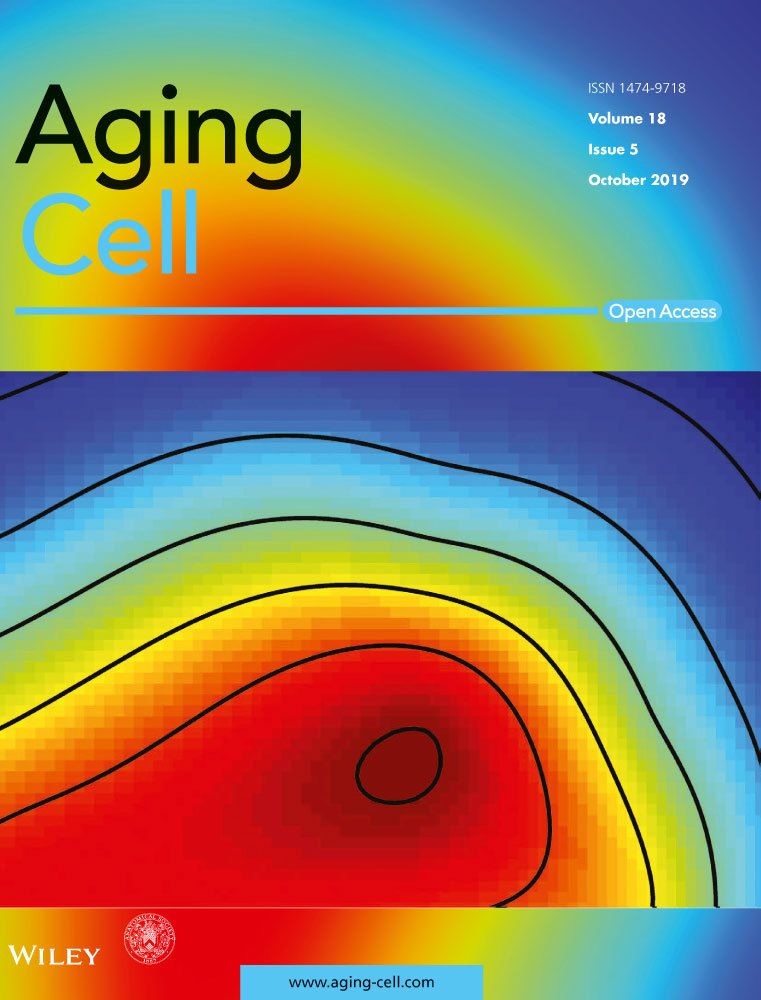
The blind mole rat (Spalax) is a wild, long‐lived rodent that has evolved mechanisms to tolerate hypoxia and resist cancer. Previously, we demonstrated high DNA repair capacity and low DNA damage in Spalax fibroblasts following genotoxic stress compared with rats. Since the acquisition of senescence‐associated secretory phenotype (SASP) is a consequence of persistent DNA damage, we investigated whether cellular senescence in Spalax is accompanied by an inflammatory response. Spalax fibroblasts undergo replicative senescence (RS) and etoposide‐induced senescence (EIS), evidenced by an increased activity of senescence‐associated beta‐galactosidase (SA‐β‐Gal), growth arrest, and overexpression of p21, p16, and p53 mRNAs. Yet, unlike mouse and human fibroblasts, RS and EIS Spalax cells showed undetectable or decreased expression of the well‐known SASP factors: interleukin‐6 (IL6), IL8, IL1α, growth‐related oncogene alpha (GROα), SerpinB2, and intercellular adhesion molecule (ICAM‐1). Apparently, due to the efficient DNA repair in Spalax, senescent cells did not accumulate the DNA damage necessary for SASP activation. Conversely, Spalax can maintain DNA integrity during replicative or moderate genotoxic stress and limit pro‐inflammatory secretion. However, exposure to the conditioned medium of breast cancer cells MDA‐MB‐231 resulted in an increase in DNA damage, activation of the nuclear factor κB (NF‐κB) through nuclear translocation, and expression of inflammatory mediators in RS Spalax cells. Evaluation of SASP in aging Spalax brain and intestine confirmed downregulation of inflammatory‐related genes. These findings suggest a natural mechanism for alleviating the inflammatory response during cellular senescence and aging in Spalax, which can prevent age‐related chronic inflammation supporting healthy aging and longevity.
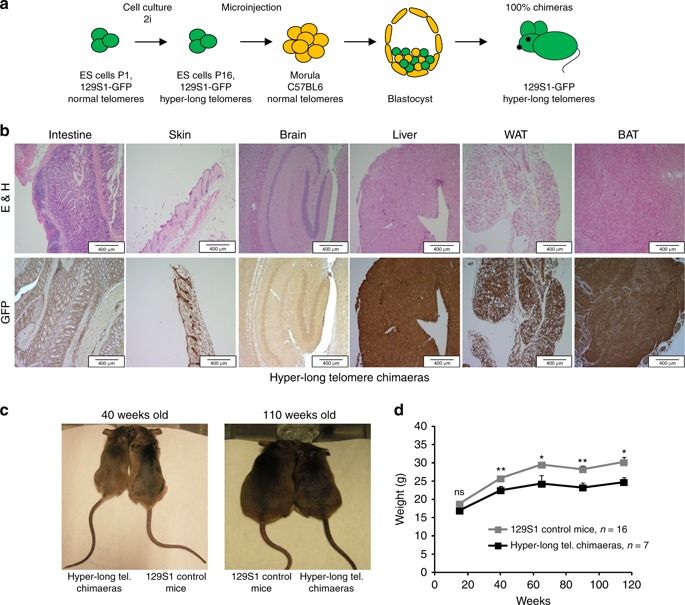
Short telomeres trigger age-related pathologies and shorter lifespans in mice and humans. In the past, we generated mouse embryonic (ES) cells with longer telomeres than normal (hyper-long telomeres) in the absence of genetic manipulations, which contributed to all mouse tissues. To address whether hyper-long telomeres have deleterious effects, we generated mice in which 100% of their cells are derived from hyper-long telomere ES cells. We observe that these mice have longer telomeres and less DNA damage with aging. Hyper-long telomere mice are lean and show low cholesterol and LDL levels, as well as improved glucose and insulin tolerance. Hyper-long telomere mice also have less incidence of cancer and an increased longevity. These findings demonstrate that longer telomeres than normal in a given species are not deleterious but instead, show beneficial effects.
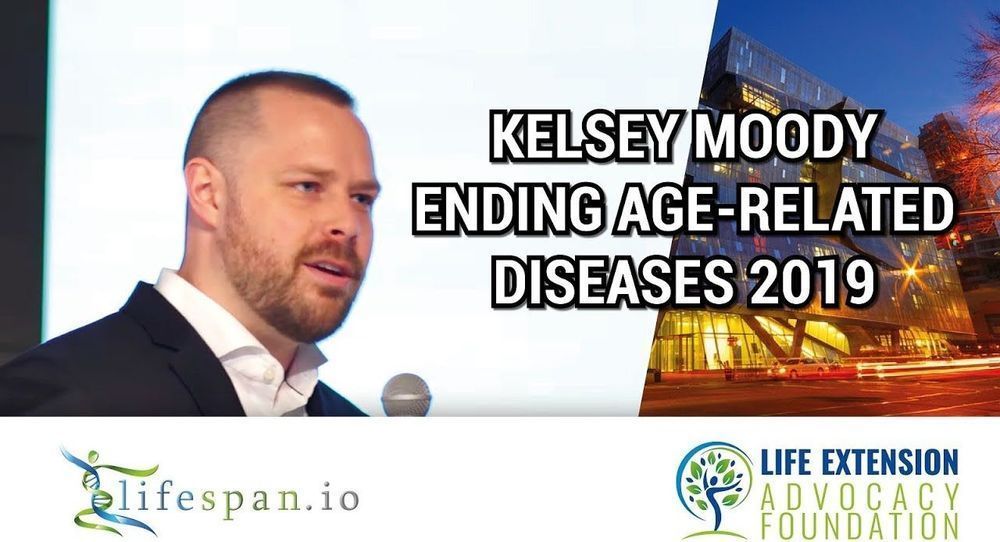
Kelsey Moody of Ichor Therapeutics presented on the LysoClear development program at the Ending Age-Related Diseases conference organized by the Life Extension Advocacy Foundation earlier this year. LysoClear is an example of the commercial development of a rejuvenation therapy, taken all the way from the starting point of the discovery of microbial enzymes capable of breaking down certain forms of harmful age-related molecular waste that contribute to aging and age-related diseases. The actual research is largely done, and the task now is to focus on manufacture, regulatory approval, and entry into the clinic.
Taken end to end, I think that this development program might be able to lay claim to being the first and oldest of the modern rejuvenation research initiatives, starting sometime back in the early 2000s. It began at the Methuselah Foundation as LysoSENS, the first of the SENS programs to get underway with modest philanthropic funding. Some of you may remember gathering dirt from graveyards to send in for analysis, in the hunt for microbial species that consume the molecular waste that our bodies cannot remove. Researches knew that those microbes existed because graveyards do not accumulate this waste — it is being broken down by something in the environment. The program carried forward into the SENS Research Foundation when it spun out from the Methuselah Foundation, and a portion of it was later licensed to Ichor Therapeutics, and became LysoClear.
Wonderful news, the MitoMouse project has successfully reached its initial $50k goal and is well on the way towards the first stretch goal! This now means the projecct will launch at the lab and the MitoMouse strain will be created.
The next step for this ambitious project is to actually create progency from the SickMice and MitoMice in order to have an effective model to test the mitochondrial repair approach, which has already been shown to work in cells, in living animals. If successful it would be vindication for mitochondrial repair therapy and move the therapy closer to translation to humans. Here is Dr. Amutha Boominathan, the leader of the MitoMouse Project at the SENS Research Foundation, to tell us a little more about the first stretch goal for the project.


Help SENS Research Foundation cure age related disease while winning the opportunity of an unforgettable experience. Donate any amount now smile http://www.lifespan.io/MitoMouse

World renowned Harvard professor and anti-aging expert David Sinclair was recently on the Joe Rogan Podcast. For over 2 hours, he discussed some of the keys to maximizing the human lifespan. We’ve condensed his advice into five things you can do right now to battle the aging process with information that is current, researched, and powerful. So if you’ve interested in learning how to maximize your chances to live longer, take a look at the information below.